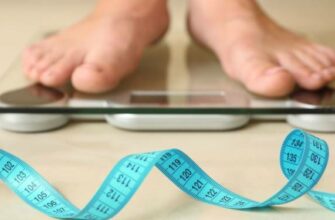In today’s fast-paced world, lifestyles are becoming more sedentary. The increasing trend of eating out and little time to cook lead to unhealthy food choices. Thus, it is not surprising that overweight and obesity are becoming more prevalent. As per a report by WHO, over 1.9 billion adults were overweight in 2016. It includes over 650 million adults who are obese.
Overweight and obesity adversely affect health. For example, it can lead to cardiovascular diseases, diabetes, and orthopaedic problems. It can also affect social life and mental wellbeing. Consequently, people adopt various methods to lose weight. These can include exercise, stress management, diet plans, and meal plans.
Weight gain and weight loss work differently for men and women. It is due to differences in body composition, metabolism, and hormones. For example, men have higher muscle mass, thus having a higher resting metabolic rate. Also, male and female hormones influence how and where fat gets accumulated in the body. Consequently, there is a difference in diet plans and weight loss meal plans for women and men.
The Science Behind Weight Loss
Before you begin your weight loss journey, it is ideal to understand how weight loss works. The food you eat is of prime importance. It consists of proteins, carbohydrates, and fats, which provide energy. These are broken down and combined with oxygen to release energy.
Your body uses this energy to carry out essential functions like respiration, circulation, cell growth and repair. It is known as basal metabolic rate. Also, the digestion of food and physical activities uses some of the remaining energy.
The basic principle of weight loss is that energy expenditure should exceed energy consumption. Thus, to lose weight, you need to create a calorie deficit. Consequently, your body mobilises the stored fat to meet your energy needs.
Meal Plans And Their Role In Weight Loss
A meal plan is a strategically prepared plan for what to eat in a coming day, week, or month. It can help achieve better nutrition and include more variety. Moreover, it helps target various health goals such as managing diabetes, lowering cholesterol, and maintaining heart health. Additionally, it aids in budgeting and pre-planning grocery shopping.
Meal plans can assist in controlling calorie consumption while ensuring proper nutrition. They can help keep track of what you eat and drink. Also, they help limit eating out.
Meal Plans for Weight Loss
1. Low Carb Meal Plans
Low carb meal plans aim to reduce the consumption of carbohydrates and are high in protein. They limit the consumption of trans fats, added sugar, processed foods, and refined grains. They can be of different kinds. A moderately low-carb meal plan allows consumption of up to 130 g of carbohydrate in a day. Thus, it ensures that you get enough fibre. Therefore, it is better than a very low-carb meal plan. A report states that low-carb consumption provides a higher metabolism. It helps burn 200-300 more calories compared to high-carb consumption.
2. Plant-based Meal Plans
Plant-based meal plans consist mainly of fruits, vegetables, legumes, and nuts. Some meal plans may allow the consumption of dairy, eggs, and even fish in a small amount. Research suggests that plant-based meal plans excluding meat consumption can reduce the risk of cardiovascular disease, hypertension, and diabetes. Moreover, they result in increased weight loss.
3. Mediterranean Meal Plans
Mediterranean meal plans consist of fruits, vegetables, nuts, seeds, whole grains, and healthy fats like olive oil. It can also include milk, yoghurts, and some lean protein such as chicken, fish and eggs in moderation. Furthermore, it limits the consumption of red meat, processed foods, refined grains, and beverages with added sugar. A study finds that it can help reduce weight. It is also associated with a decrease in the risk of cholesterol and high blood pressure. In addition, it aids in blood sugar management for diabetes.
4. Clean Eating Meal Plans
A clean eating meal plan aims at consuming wholesome foods without additives and preservatives. The foods included should undergo little to no processing. It contains whole grains, fruits, vegetables, lean protein, legumes, nuts, seeds, and healthy fats. Furthermore, it limits the consumption of refined carbs, added sugar, hydrogenated fats, and alcohol. It suggests drinking 2-3 litres of water every day. It ensures high energy and makes your skin glow. It makes teeth and gums healthier. Moreover, it can help shed up to 3 pounds per week.
5. Low Sodium Meal Plan
Sodium is a micronutrient essential for the body. However, its excess consumption can lead to health complications like high blood pressure and heart disease. It can also lead to water retention. A low sodium meal plan aims to limit sodium consumption. Daily recommended limits vary from person to person with heart problems and high blood pressure.
Sodium is not the same as salt. Foods such as canned foods, processed meats, frozen meals, and pickles are high in sodium. Other foods high in sodium include packaged salty snacks and soups, soy sauce, barbeque sauce, ketchup, cheese, pizza, and bread. Consequently, a low sodium plan restricts consuming such foods.
6. High Fibre Meal Plan
Fibre is of two types, soluble and insoluble. Soluble fibre lowers cholesterol and maintains heart health. On the other hand, insoluble fibre remains undigested and aids in regular bowel movements. A high-fibre meal plan consists of fruits, vegetables, whole grains, legumes, nuts, and seeds. Fibre absorbs a lot of water as it passes through the colon. Therefore, it is necessary to consume 8-10 glasses of water every day to avoid constipation. Foods rich in fibre make you feel fuller for longer. Moreover, they tend to have low calories. A report states that high fibre consumption is linked to higher satiety and weight loss and even lowers the risk of some cancers.
How to Choose Your Meal Plan
Several factors require consideration when choosing the best-suited meal plan :
- Personal preferences: Personal needs and preferences play an important role. While some people may prefer a well-structured plan, others may prefer flexibility.
- Sustainability: The chosen plan should be sustainable in the long run.
- Restrictions placed: Overly restrictive plans can be hard to follow. For example, if a plan excludes entire food groups, it may not provide proper nutrition.
- Current conditions: Current weight and underlying health conditions are essential factors.
Other Measures to Help Lose Weight
Meal plans alone may not make a significant difference. The most effective way to lose weight is to combine a proper diet with moderate exercise. For better results, follow healthy lifestyle habits. Measures that can supplement weight loss efforts include:
Exercise
Exercising improves overall health. It lowers blood pressure and cholesterol and may even reduce the risk of some cancers. It helps burn extra calories. Moreover, it assists in maintaining and developing muscle mass which burns more calories. Various types of exercise regimes can aid in weight loss. It includes aerobic exercises, weight training, and yoga. A simple exercise like walking can burn up to 100-200 calories in just 30 minutes. By practising this five days a week, you can burn up to 500-1000 extra calories.
Drink Adequate Water
Drinking water half an hour before a meal reduces hunger. Accordingly, it results in a lesser calorie intake. Drinking enough water helps to circulate nutrients properly and flush out toxins from the body, which improves metabolism and weight loss.
Manage Stress and Sleep Properly
High-stress levels can increase cortisol in your body. It is responsible for the build-up of belly fat. Also, lack of sleep disrupts appetite-regulating hormones, leptin, and ghrelin. Consequently, you feel hungrier and crave foods high in sugar, fat, and calories. Thus, adequate sleep and stress management are essential for weight loss.
Eat Slowly
Your brain can take up to 20 minutes to register that you are full. Hence, quick eaters end up consuming more calories. Therefore, it is beneficial to eat slowly. It helps us feel fuller with fewer calories.
More Physical Activity
- Make small changes like move around after every 40-50 minutes
- Take stairs instead of lifts.
- Walk for short distances or take your bicycle.
It can help burn more calories regularly.
Set Goals
Goals keep you focused and motivated. Setting long-term and short-term goals help you plan the process. The goals set should be relevant and realistic. It is ideal to have measurable and specific goals with defined timelines. Also, set process goals. They can assist in addressing how you achieve your short-term and long-term goals.
They can include goals such as walking for 30 minutes a day or drinking ten glasses of water every day.
Conclusion
Food plays a vital role in weight loss and weight management. What we consume can make the difference between weight loss and weight gain. Meal plans can act as a tool to manage this. They help limit calorie consumption while ensuring adequate nutrition. They can target various health concerns. They can help modify food compositions as per your goals. Their aim is not to place restrictions but to create a shift from unhealthy to healthy. Meal plans with other lifestyle changes can lead to significant weight loss. They can also improve overall health.
Frequently Asked Questions (FAQs)
Q. What should I drink first thing in the morning to lose weight?
A. Lukewarm lemon water is a popular drink to lose weight. It contains antioxidants and pectin fibres. It can help get rid of toxins and aid in weight loss. Other options include fennel or cumin seeds and apple cider vinegar with water.
Q. How can I lose extreme weight fast?
A. There are numerous extreme diets, such as the chemical diet and maple syrup diet. However, it is not advisable to follow them as they do not provide enough calories or nourishment. It is safe to lose 1-2 pounds per week because losing more weight can reduce muscle mass and decrease metabolism. Extreme weight loss can also lead to sagging skin and stretch marks.
Q. Where does the fat go when you lose weight?
A. You lose fat when the stored fat is converted into energy and used up. It causes fat cells to shrink. Water and carbon dioxide are the waste products of this process. Water is removed through urine and sweat, while carbon dioxide through the lungs.
Q. What happens to your stomach when you lose weight?
A. Losing weight can cause your stomach to have less elasticity. It occurs due to hormonal changes by ghrelin and leptin, which impact your feelings of hunger and thirst. However, it does not affect the size of your stomach.
Q. When you feel hungry, are you burning fat?
A. Feeling hungry indicates that you are low on energy and nutrients. It does not relate to the fat-burning process. Long-lasting hunger induced by the drastic calorie restriction will only slow down your metabolism.
Q. What food should I avoid to lose weight?
A. Baked foods, highly processed and fried foods, and white bread, are some foods to avoid. You should also stay away from white rice and processed meat. In addition, you should avoid foods with added sugar like sugary drinks, ice creams, and candy bars.
Q. How long does it take belly fat to go away?
A. To reduce belly fat, you must reduce overall body fat, as spot reduction does not work. It is safe to lose 1-2 pounds per week, as per the Centres for Disease Control and Prevention (CDC). One pound of fat consists of 3500 calories, implying that you have to cut 500 calories per day to lose 1 pound in a week. It could take 1-2 months to see a difference in your waistline by these standards.
Q. Do you lose weight when you poop?
A. While the weighing scale may show a difference of 100 grams or so, you aren’t losing weight when you poop. Therefore, it does not make any difference to the excess fat in the body. Also, it is a temporary change.
Q. How much weight can a woman lose in 1 month?
A. A report by CDC suggests that a sustainable amount of weight you can lose per week is 1-2 pounds. Therefore, we can say that a woman can safely lose 4-8 pounds in 1 month. Thus, maintaining an average weight can prevent numerous diseases like coronary heart disease and stroke.

 Home
Home Health
Health Diet & Nutrition
Diet & Nutrition Living Well
Living Well More
More










